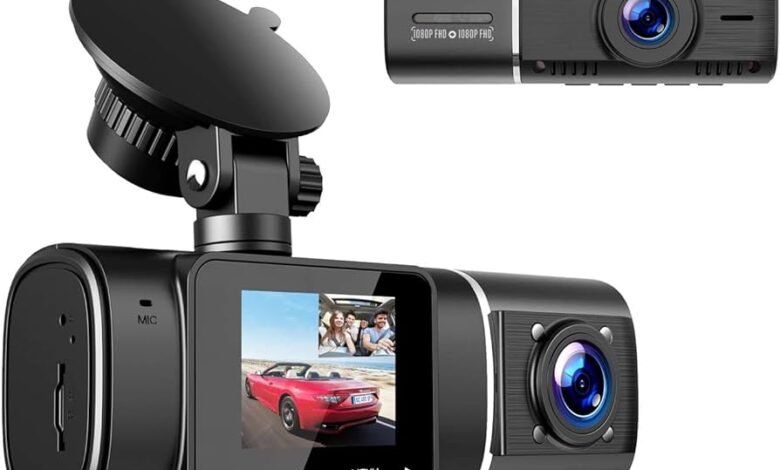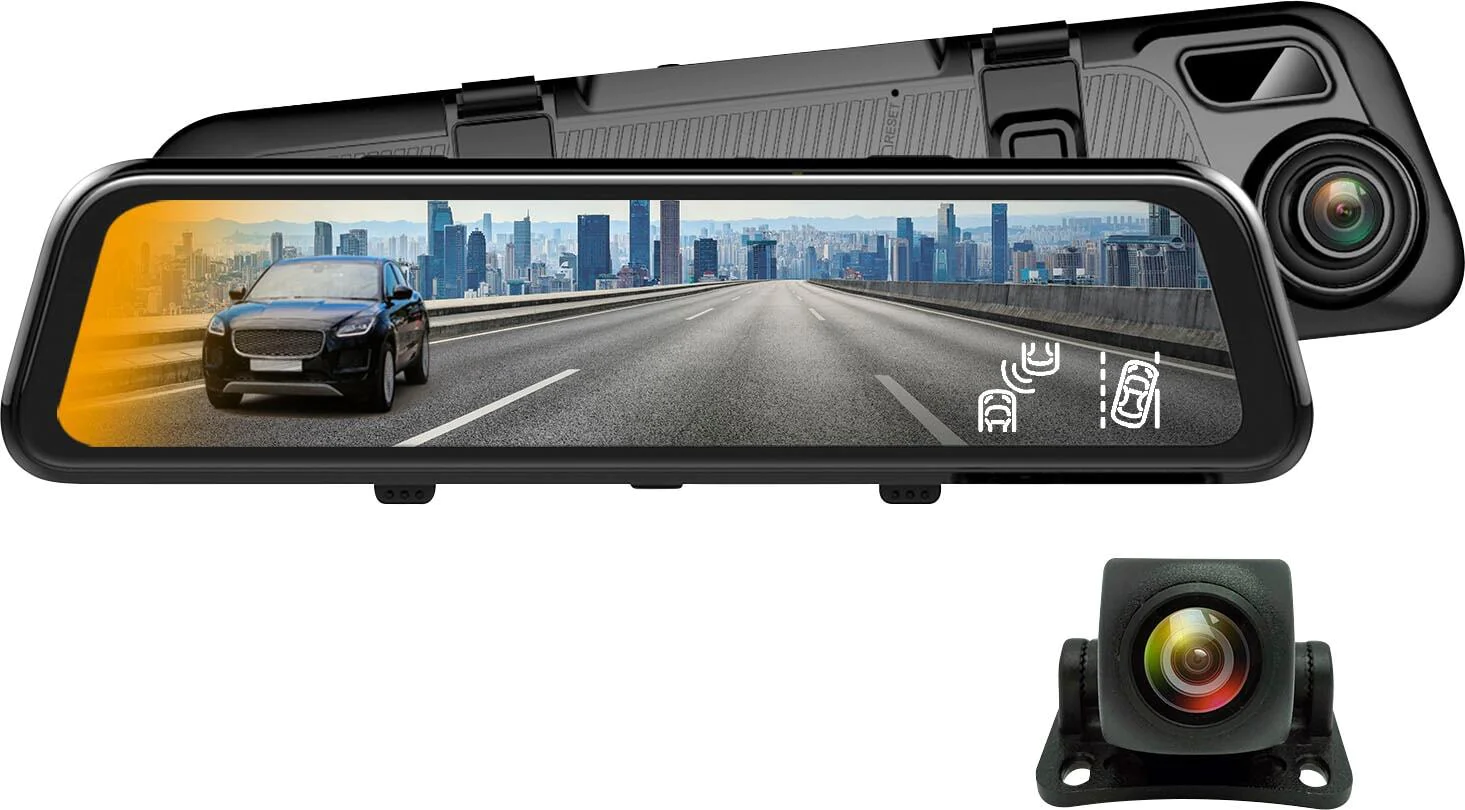How to Get the Most Out of Your Front and Rear Dash Cam

Introduction to Dash Cams
Are you tired of playing the guessing game when it comes to accidents or incidents on the road? Wish there was a way to capture everything that happens while you’re behind the wheel? Well, look no further because front and rear dash cams are here to save the day! These nifty little devices not only provide an extra set of eyes on the road but also offer a myriad of benefits that can make your driving experience safer and more secure. In this blog post, we’ll dive into how to get the most out of your front and rear dash cam, from choosing the right one for your needs all the way through installation, retrieval of footage, legal considerations, and beyond. So buckle up and let’s hit the road to discover everything you need to know about maximizing your dash cam experience!
Benefits of Having a Front and Rear Dash Cam
Having a front and rear dash cam in your vehicle can offer numerous benefits that go beyond just capturing footage of accidents or incidents on the road.
Having both a front and rear dash cam provides you with an extra layer of protection. While the front camera captures what’s happening ahead of you, the rear camera records any activity behind your vehicle. This means that in the event of an accident or altercation, you have visual evidence from both angles to support your side of the story.
Another advantage is increased peace of mind. With a dash cam installed, you can drive confidently knowing that any unexpected events will be recorded. Whether it’s reckless drivers cutting you off or pedestrians darting into traffic, having footage as proof can help resolve disputes and protect yourself legally if needed.
Furthermore, a front and rear dash cam can also serve as a deterrent for potential thieves and vandals. The presence of visible cameras on your windshield and back window acts as a warning sign to anyone with malicious intent.
Moreover, some advanced models come equipped with features like motion detection and parking mode. These features ensure that even when your vehicle is parked and unattended, any unusual activity around it will be captured by the cameras.
Investing in a front and rear dash cam offers added protection, peace of mind, deterrence against thefts/vandalism,and enhanced surveillance capabilities while driving or parked.
Choosing the Right Dash Cam for Your Needs
Choosing the right dash cam for your needs can be a daunting task, given the wide variety of options available in the market. However, with some careful consideration and research, you can find a dash cam that perfectly suits your requirements.
Determine whether you need both front and rear recording capabilities or just one. If you want comprehensive coverage of both ends of your vehicle, opt for a front and rear dash cam system. This will ensure that any incidents or accidents are captured from all angles.
Next, consider the resolution and quality of the camera. Higher resolutions such as 1080p or even 4K will provide clearer footage which may be useful in case of an accident or dispute. Additionally, look for features like night vision capability to ensure optimal recording even in low light conditions.
Another important factor to consider is storage capacity. Dash cams typically use microSD cards to store footage, so make sure to choose one with sufficient storage space based on how much recording time you desire before overwriting old footage.
Furthermore, think about connectivity options such as Wi-Fi or GPS functionality which allows for easier access and retrieval of recorded footage.
Don’t forget about budget considerations. Determine how much you are willing to spend on a dash cam without compromising on essential features.
By carefully considering these factors and doing thorough research on different models available in the market today,you can choose a dash cam that meets all your specific requirements
Installation and Proper Setup
Installing a front and rear dash cam may seem like a complicated task, but with the right guidance, it can be a breeze. Before you begin, make sure to read the instructions provided by the manufacturer carefully. Each dash cam may have specific requirements for installation.
Decide on the ideal location for your front and rear cameras. The front camera should be mounted near your rearview mirror to capture an unobstructed view of the road ahead. The rear camera should be positioned in such a way that it provides an optimal view of what’s happening behind your vehicle.
 Next, clean the areas where you will be attaching the cameras using alcohol wipes or a mild cleaning solution to ensure they adhere properly. Then use adhesive mounts or suction cups as recommended by the manufacturer to secure both cameras in place.
Next, clean the areas where you will be attaching the cameras using alcohol wipes or a mild cleaning solution to ensure they adhere properly. Then use adhesive mounts or suction cups as recommended by the manufacturer to secure both cameras in place.
After installing the cameras, connect them to their respective power sources. Some dash cams are powered through cigarette lighter adapters, while others require hardwiring into your vehicle’s electrical system.
Adjust each camera’s angle so that they are level and capturing clear footage. Test out different angles before finalizing their positions.
Proper setup is crucial for obtaining high-quality video recordings from both your front and rear dash cams. Take your time during installation to ensure everything is securely attached and functioning correctly
Tips for Effective Use of Your Dash Cam
1. Positioning is key: When installing your front and rear dash cam, make sure they have a clear view of the road ahead and behind. Mount them securely to avoid vibrations that can affect video quality. Additionally, ensure that the cameras are not obstructing your view or distracting you while driving.
2. Regularly check your footage: It’s important to periodically review your dash cam footage to ensure it is working properly and capturing everything you need it to. Take note of any issues like glare or low light conditions that may impact the clarity of the recordings.
3. Keep your memory card in good condition: Dash cams rely on memory cards to store video footage, so it’s crucial to use a high-quality card with sufficient storage capacity. Be sure to format the card regularly as well, as this helps prevent errors and ensures smooth operation.
4. Adjust settings according to your needs: Most dash cams come with adjustable settings such as resolution, frame rate, and loop recording duration. Experiment with these settings until you find what works best for you in terms of video quality and storage efficiency.
5. Capture important details: In case of an incident or accident, having clear footage can be vital for insurance claims or legal purposes. To capture important details like license plates or street signs effectively, position your camera at eye level (if possible) and adjust its focus accordingly.
6.Protect against tampering: Some dash cams offer features like password protection or built-in GPS tracking which can help deter theft attempts or unauthorized access to recorded data.
Remember, using a front and rear dash cam responsibly means respecting privacy laws in your jurisdiction while still maximizing their benefits for safety and security purposes.
How to Retrieve and Save Footage
Retrieving and saving footage from your front and rear dash cam is essential for several reasons. Not only does it allow you to review any incidents or accidents that may have occurred, but it can also serve as valuable evidence in case of disputes or insurance claims.
To retrieve the footage, start by removing the memory card from your dash cam. Most dash cams use a micro SD card, so make sure you have a compatible card reader for your computer. Insert the memory card into the reader and connect it to your computer.
Once connected, locate the folder where the video files are stored on the memory card. Typically, these files will be in a specific format (e.g., .
MOV or .
MP4). Copy and paste these files onto your computer’s hard drive or an external storage device to ensure they are safely backed up.
To save the footage effectively, organize it into folders based on date or event. This way, you can easily access specific videos when needed without having to search through numerous files.
It’s also important to regularly delete old footage that is no longer needed to free up space on your memory card. Set a reminder to do this every few weeks or whenever storage becomes limited.
 By following these steps, you can ensure that retrieving and saving footage from your front and rear dash cam is quick and hassle-free!
By following these steps, you can ensure that retrieving and saving footage from your front and rear dash cam is quick and hassle-free!
Legal Considerations and Privacy Concerns
When it comes to using a front and rear dash cam, it’s important to be aware of the legal considerations and privacy concerns. While dash cams can provide valuable evidence in case of an accident or incident on the road, there are certain regulations you need to follow.
Always check your local laws regarding the use of dash cams. Some countries or states may have restrictions on recording audio without consent or mounting devices on certain areas of your windshield. Familiarize yourself with these regulations to avoid any legal issues.
Additionally, it’s crucial to respect other people’s privacy while using a dash cam. Avoid capturing footage that could infringe upon someone else’s rights, such as filming inside private property or recording conversations without consent.
To protect both yourself and others, consider investing in a dash cam that allows you to easily turn off audio recording when needed. This way, you can comply with any relevant laws while still benefiting from video evidence on the road.
Be mindful of how you handle and share footage captured by your dash cam. Use discretion when sharing videos online or with third parties and ensure that sensitive information is not disclosed unintentionally.
By staying informed about the legal considerations surrounding dash cams and respecting privacy concerns, you can make the most out of your front and rear dash cam while also abiding by the law
Additional Features to Look For
When shopping for a front and rear dash cam, it’s important to consider the additional features that can enhance your overall experience and provide added protection on the road. Here are some key features you should look out for:
1. GPS Tracking: A dash cam with GPS tracking allows you to record your speed and location, providing valuable evidence in case of an accident or incident.
2. G-Sensor: This feature detects sudden movements or impacts and automatically locks the footage, ensuring that important moments are not overwritten.
3. Parking Mode: If you often park your car in busy areas or overnight, a dash cam with parking mode is essential. It will activate when motion is detected around your vehicle, capturing any potential vandalism or accidents even when you’re away.
4. Wi-Fi Connectivity: With Wi-Fi connectivity, you can easily transfer footage from your dash cam to your smartphone or computer without the hassle of removing the SD card.
5. Wide-Angle Lens: Opting for a dash cam with a wide-angle lens will give you a broader view of the road ahead as well as capture more details from side windows.
6. Night Vision: Consider investing in a dash cam with night vision capabilities if you frequently drive at night or in low-light conditions; this feature ensures clear recordings even in challenging lighting situations.
Remember, these additional features may come at an extra cost but can greatly enhance the functionality and reliability of your front and rear dash cam setup.
Maintenance and Care Tips
To ensure that your front and rear dash cam continues to perform at its best, regular maintenance and care are essential. Here are some tips to help you keep your dash cam in top condition.
1. Clean the lenses: Over time, dust, dirt, and smudges can accumulate on the camera lenses, affecting the quality of your footage. Use a soft microfiber cloth or lens cleaning solution to gently wipe away any debris.
2. Check the power source: Make sure that the power cables are securely connected and free from damage or wear. Regularly inspect the connections for any signs of fraying or loose wires.
3. Adjust camera angles: Periodically check that both cameras are properly aligned and capturing a clear view of the road ahead and behind you. Adjust as necessary to avoid any blind spots.
4. Protect from extreme temperatures: Dash cams can be sensitive to temperature fluctuations, especially in extremely hot or cold conditions. Avoid exposing your dash cam to direct sunlight for prolonged periods of time.
5. Update firmware regularly: Manufacturers often release firmware updates with new features or bug fixes for their dash cams. Keep an eye out for these updates and follow the instructions provided by the manufacturer for installation.
By following these maintenance tips, you can ensure that your front and rear dash cam remains reliable and provides accurate recordings whenever you need them most!
Conclusion
Having a front and rear dash cam can provide numerous benefits for drivers. From capturing accidents and incidents on the road to providing evidence in case of disputes or insurance claims, these devices have become an essential tool for many motorists.
When choosing a dash cam, it’s important to consider your specific needs and budget. Look for features such as high-resolution video recording, wide-angle lenses, GPS capabilities, and parking mode. Installation and proper setup are crucial to ensure optimal performance.
To get the most out of your dash cam, follow these tips: regularly check the device’s storage capacity and delete unnecessary footage; familiarize yourself with how to retrieve and save important footage; be aware of legal considerations regarding privacy when using your dash cam; look for additional features like Wi-Fi connectivity or cloud storage options.
Remember to take good care of your dash cam by keeping it clean from dust or debris and avoiding extreme temperatures. Regularly check for firmware updates recommended by the manufacturer to keep your device running smoothly.
Investing in a front and rear dash cam is a wise decision that can offer peace of mind while driving. Whether you want added safety on the road or protection against fraudulent claims, having this extra set of eyes can make all the difference. So equip yourself with a reliable dash cam today!




